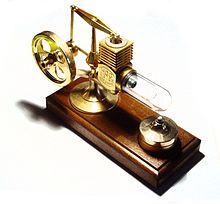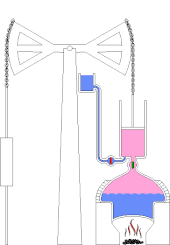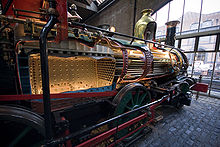
Back محرك احتراق خارجي Arabic Рухавік знешняга згарання Byelorussian Рухавік вонкавага згараньня BE-X-OLD Двигател с външно горене Bulgarian Motors de combustió externa Catalan بزوێنەری سووتانی دەرەکی CKB Motor s vnějším spalováním Czech Μηχανή εξωτερικής καύσης Greek Motor de combustión externa Spanish موتور برونسوز Persian



| Part of a series on |
| Aircraft propulsion |
|---|
|
Shaft engines: driving propellers, rotors, ducted fans or propfans |
| Reaction engines |
An external combustion engine (EC engine) is a reciprocating heat engine where a working fluid, contained internally, is heated by combustion in an external source, through the engine wall or a heat exchanger. The fluid then, by expanding and acting on the mechanism of the engine, produces motion and usable work.[1] The fluid is then dumped (open cycle), or cooled, compressed and reused (closed cycle). In these types of engines, the combustion is primarily used as a heat source, and the engine can work equally well with other types of heat sources.